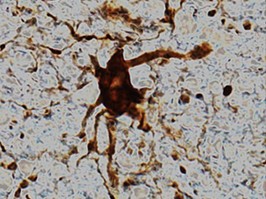u.k. lags canada in ban on heading the ball
u.k. recently banned using heads in soccer for kids aged 11, a practice that has been linked to increased dementia risk.

using the head to direct a ball has been linked to dementia. stock/ getty images
this past week, scotland, followed by england and ireland, banned heading the ball in under 12s. heading the ball is the act of bouncing a flying soccer ball off of (ideally) the top of one’s forehead to direct the ball. it’s a practice that scientists have recently flagged as dangerous, linking it to neurological damage and 3.5 times the risk of dementia in later life.canada, it turns out, has a similar ban in place. in an emailed statement, the national governing body for soccer in this country, canada soccer, stated that: “canada soccer has had in place since before 2010 a policy that restricts heading of a soccer ball until 12 years of age. the guidelines call for a beach or soft ball to be used at u-8 (eight-year-olds), for a lightweight ball (foam or otherwise) to be used to practice heading technique at u-10 and for a soft ball to be incorporated into heading in skill games at u-12.” the directive was posted recently on canada soccer’s website.the policy is welcome news to a number of organizations. one is parachute canada, a national charity dedicated to reducing injury on sport, which has worked with soccer canada to develop concussion protocols. stephanie cowle, director of knowledge translation at parachute, says she’s glad there are national guidelines around heading the ball now in place. “parachute encourages policies that are informed by good quality evidence,” she says.ontario soccer also supports canada soccer’s position and says more enforcement is necessary. gary miller, director of soccer operations at ontario soccer, says that heading the ball during games is supposed to be policed by match officials. at the club level, it’s up to the technical director to police. “technical directors need to monitor this closely. if they’re not, then somebody is not doing their job,” he says.in newly-released research out of glasgow university, researchers studied the causes of death in over 7,500 former professional soccer players who were playing between 1900 and 1976, comparing them to individuals of the same age living in similar social demographic circumstances.they found soccer players have a five times greater risk of alzheimer’s disease, are four times more likely to develop motor neuron disease and have a three times higher chance of developing parkinson’s disease.a 2018 ubc study published in the british medical journal found that certain nerve cell proteins that become elevated after a concussion (which are also associated with the development of neurogenerative diseases like alzheimer’s disease) were present at one hour and also at one month after impact in the blood of players after heading the ball. their findings suggest that the repetitive nature of headers can lead to nerve cell damage over time.the researchers also did the math. “players can head the ball up to 12 times per game, and with approximately 40 games played in a professional season a player may potentially head the ball between 400 and 500 times per season, not including those performed in practice,” reads the study.ms. cowle believes there is more research needed into how heading the ball affects younger players. “what would be the long-term effect on the brain of these repeated hits?” she says.
 2 minute read
2 minute read





